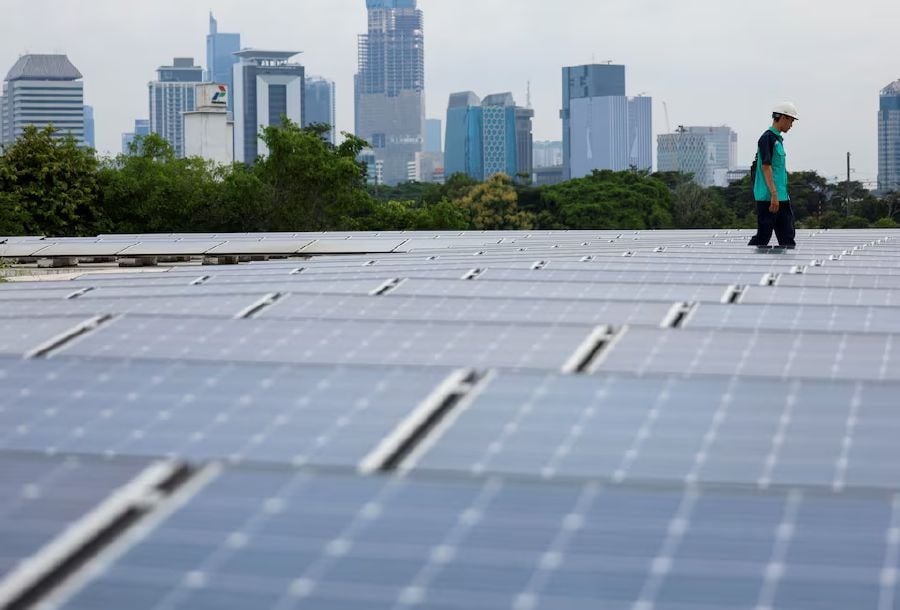KUALA LUMPUR: Malaysia's upcoming large-scale solar (LSS) projects, including LSS5, LSS5+, and LSS6, are projected to unlock contracts valued between RM15 billion and RM18 billion over the next 24 months, driving robust activity across the solar energy sector.
Analysts noted that this marks the largest rollout of LSS projects in the nation's history, keeping solar players occupied with engineering, procurement, construction, and commissioning (EPCC) works through 2027.
Hong Leong Investment Bank (HLIB) analyst Tan Kai Shuen said transmission and distribution upgrades under the fourth regulatory period (RP4) (2025–2027) will strengthen the national grid, supported by a record RM42.8 billion in allowable capital expenditure (capex).
These enhancements will enable the grid to accommodate increased renewable energy (RE) capacity and support long-term growth.
"The expansion of renewable energy capacity aligns with increasing electricity demand, fueled by the growth of data centers (DC), the adoption of electric vehicles (EVs), and Malaysia's transition toward high-income nation status.
"Against this backdrop, and with more ambitious RE targets expected in the upcoming nationally determined contributions (NDC), we see Malaysia's RE sector entering a multi-decade super cycle as the country accelerates its energy transition," he added.
Tan said major landowners like SD Guthrie Bhd could capitalise on the expansion of large-scale solar farms, especially in rural areas where extensive landbanks can be leveraged for RE projects.
"With Malaysia set to take the stage during its Asean Chairmanship and host the Asean Summit this year, its leadership in driving regional energy transition efforts will be closely watched, underscoring the nation's commitment to balancing economic growth with climate action," Tan added.
Kenanga Investment Bank Bhd analyst Nigel Ng said EPCC players can still benefit from lower solar panel prices, with an estimated gross profit margin in the low mid-teens for LSS5+.
"With current prices, we expect winning rates to fall between 14 sen/kWh and 18 sen/kWh, yielding an eight per cent project internal rate of return," he said.
Ng said Solarvest Holdings has a strong market position, execution track record, clientele and value proposition of its photovoltaic system financing programme.
He added that the company's strong earnings visibility backed by sizeable outstanding order and tender books, as well as recurring incomes from a growing portfolio of solar assets.
As for Samaiden Group Bhd, Ng said the company focuses on residential and commercial projects typically fetch higher margins.
The company also stands out for providing complete solutions, including financing for customers and has strong earnings visibility due to a large outstanding order and tender book, he added.
RE Sector Gears Up for Growth
Solarvest Holdings Bhd executive director anf group chief executive officer Davis Chong said the company - which has a 30 per cent market share and completed 1.3GW of renewable energy projects - could manage the large-scale solar initiatives.
With strong technical expertise, financial strength, and execution capacity, he said Solarvest is well-equipped to handle complex projects.
He added that the partnerships with investment and land bank owners further position the company to capitalise on emerging opportunities in the solar market.
On the challenges front, Chong said competition intensified as new entrants emerge, while the sector is also facing a shortage of experienced contractors and labor, hence the need for workforce upskilling.
He also called for government support in upgrading grid infrastructure to handle the increasing renewable energy capacity. He cautioned that the decreasing tariffs for LSS projects pose a risk to project financials, underscoring the importance of securing project bankability.
However, Chong was optimistic about the opportunities arising from the LSS programme, as the expansion would provide Solarvest with additional EPCC contract opportunities.
By focusing on large, high-value projects, he said Solarvest intends to minimise competition with smaller players.
"The integration of battery storage and smart grid technology will be instrumental in shaping the future of the renewable energy sector and Solarvest is well-positioned to leverage these innovations for long-term growth," he added.
ACE Market-bound Pekat Group Bhd's subsidiary Pekat Teknologi Sdn Bhd is one of the mid-cap companies that are preparing for the upcoming LSS6 bidding in Q2 2025 while actively participating in the ongoing LSS5+ round.
Pekat Teknologi director of business development Jia-Sheen Sim said the company is actively positioning itself to take full advantage of Malaysia's aggressive expansion of the LSS programme, which is expected to bring significant opportunities to the RE market.
With the LSS5+ opening up bids for a combined 4GW of solar energy capacity and the anticipated LSS6 in less than a year, the industry is poised for further infrastructure development.
Leveraging TNB's Capex Boost
Chong said Tenaga Nasional Bhd's (TNB) investment in grid infrastructure upgrades is a crucial enabler for Malaysia's energy transition, directly benefiting the large-scale solar sector in several ways.
He said the investment enhanced grid capacity that reduces intermittency issues, facilitating smoother renewable energy integration and improving the feasibility of large-scale solar adoption.
"Stronger grid resilience ensures higher energy uptake, sustaining long-term demand for solar projects. Greater infrastructure support encourages more large-scale solar deployments, creating a more robust pipeline of opportunities for Solarvest," he said.
Chong suggested that TNB needs to enhance grid data transparency by sharing insights on infrastructure development, including new RE zone substations, EV infrastructure network planning, and standalone utility battery storage integration, which are critical for effective energy transition planning.
Meanwhile, Sim said TNB increased capex ensures better stability and higher renewable energy integration.
"With increased access to the grid, this will directly open up more LSS project options and opportunities for all participants in the industry," he added.
Sim, however, said that challenges such as grid connectivity constraints and financing remain key factors that require strategic planning and collaboration with relevant stakeholders.
